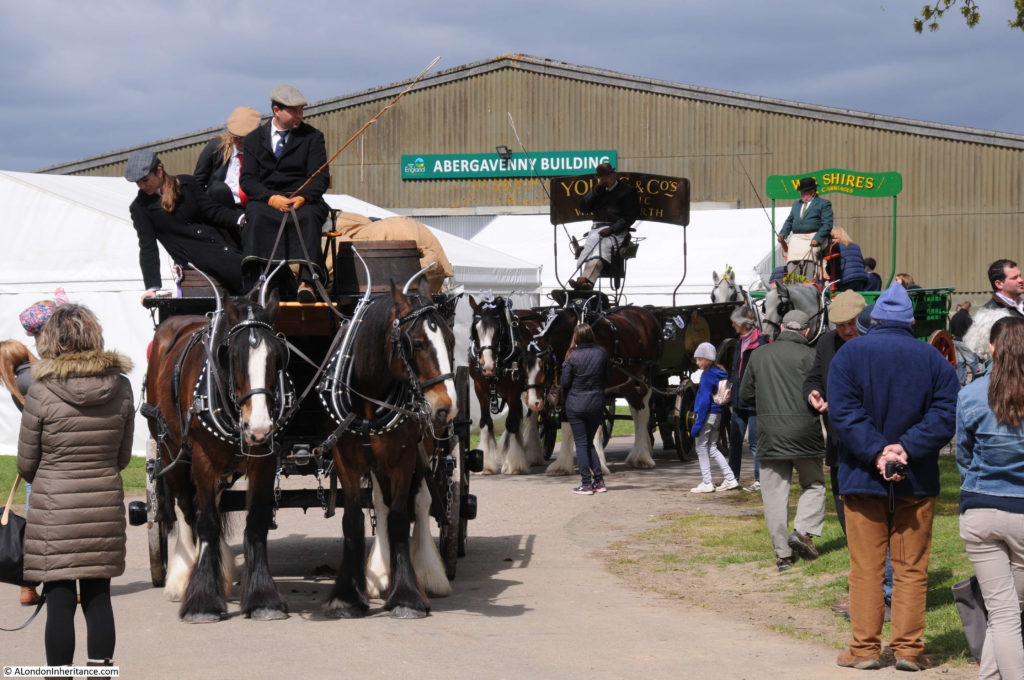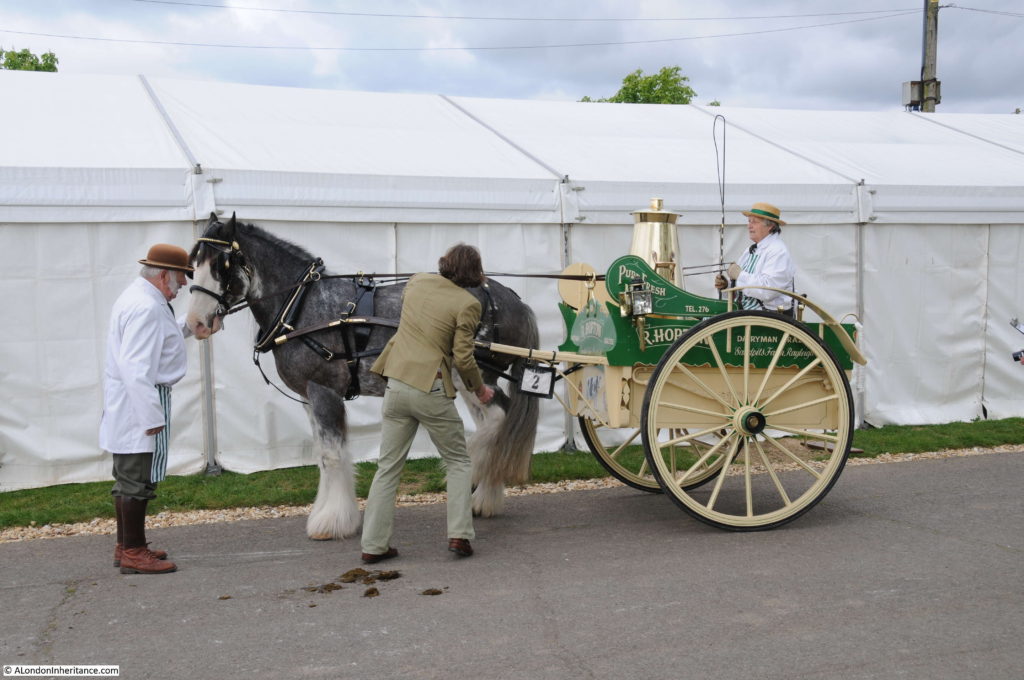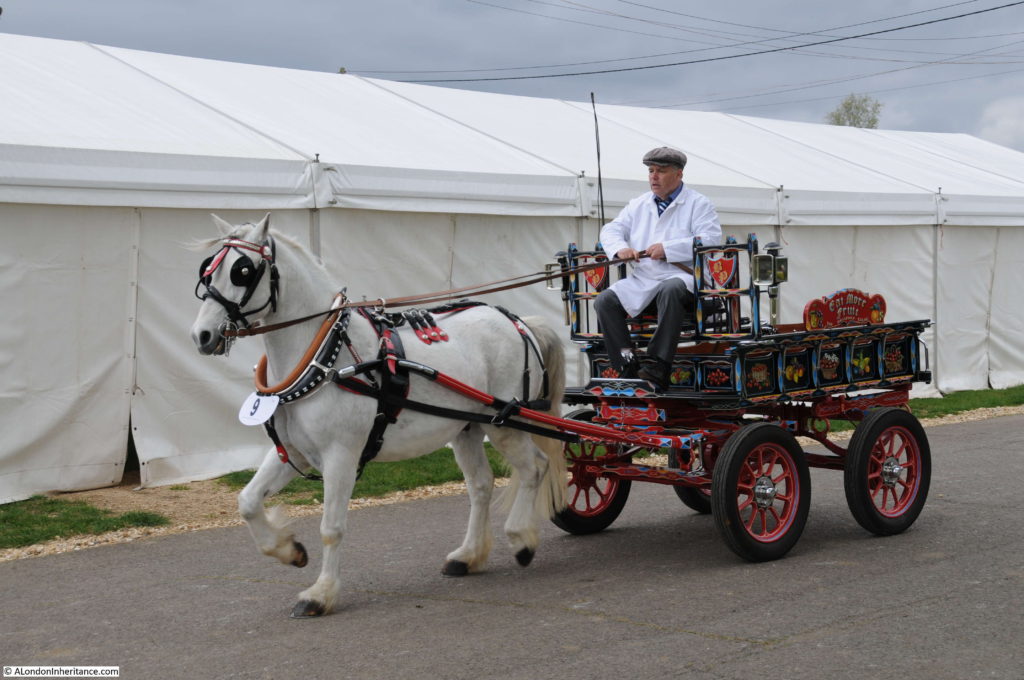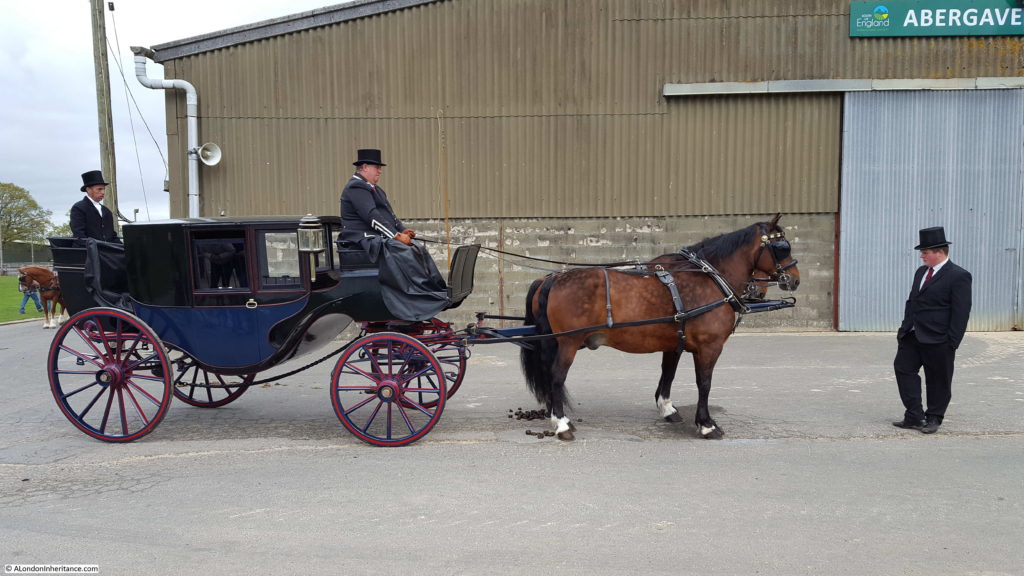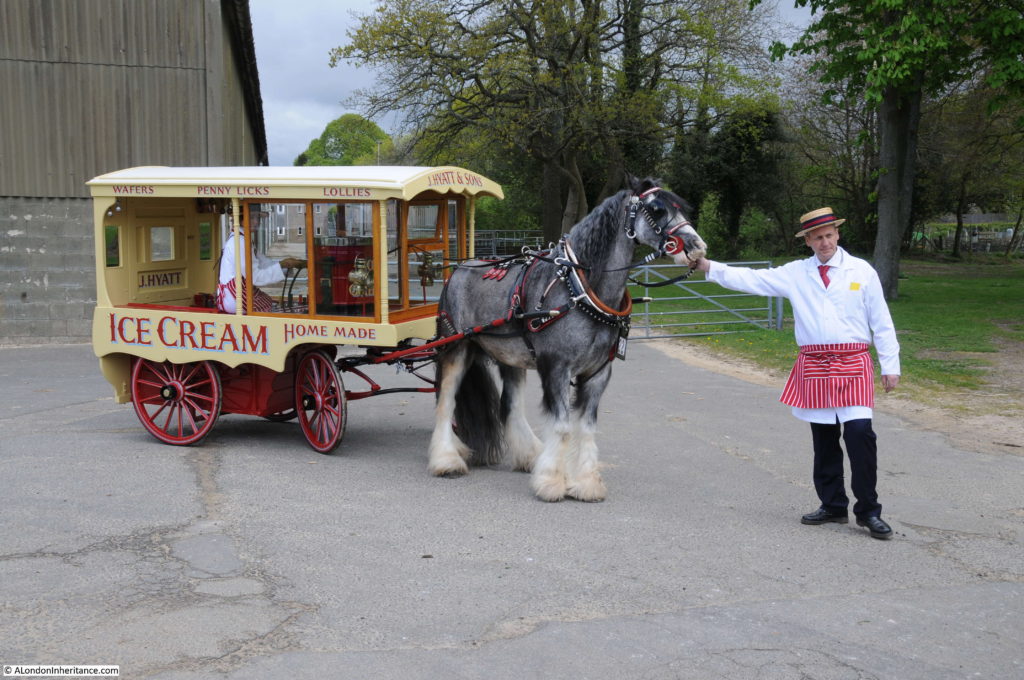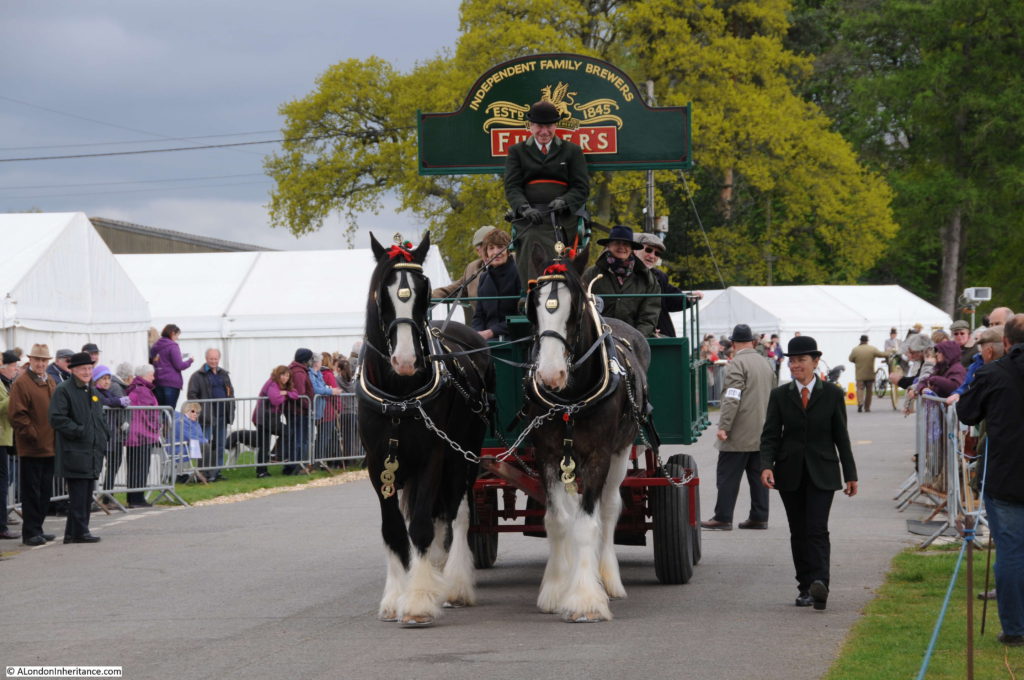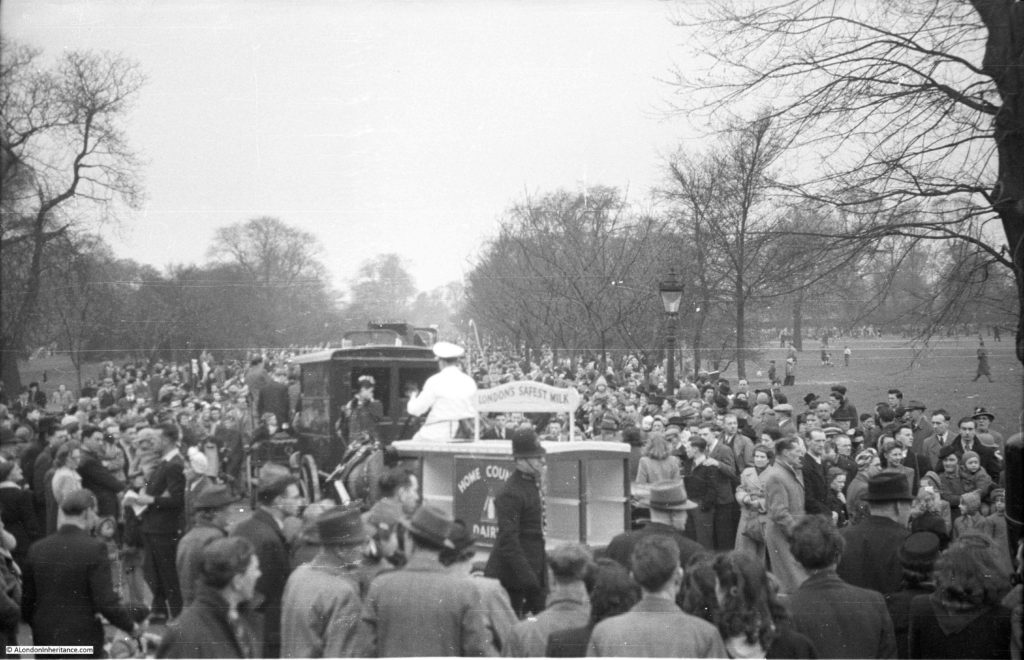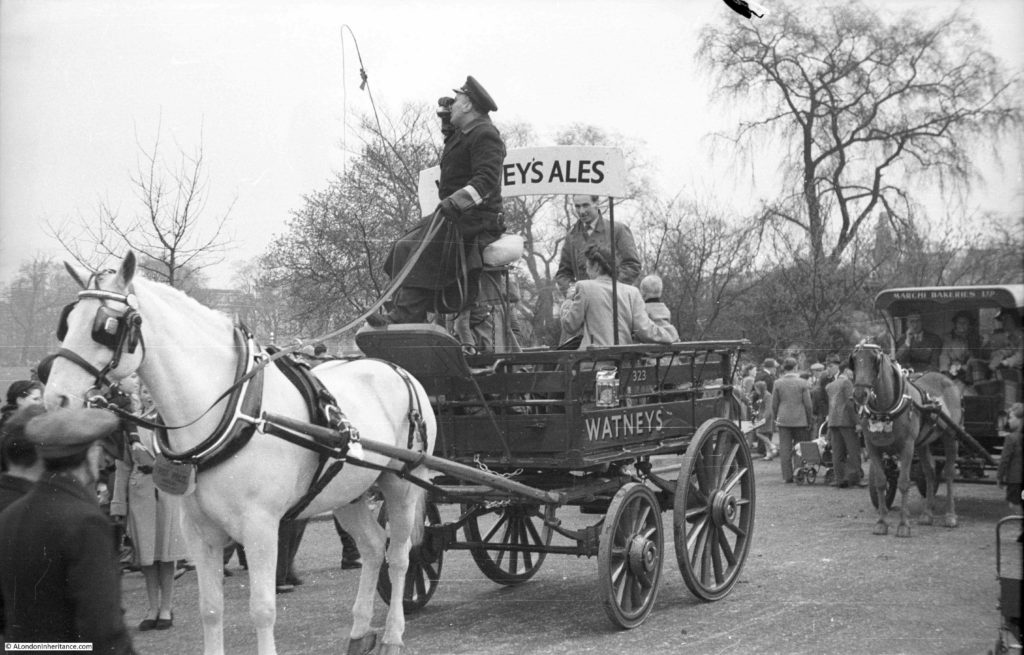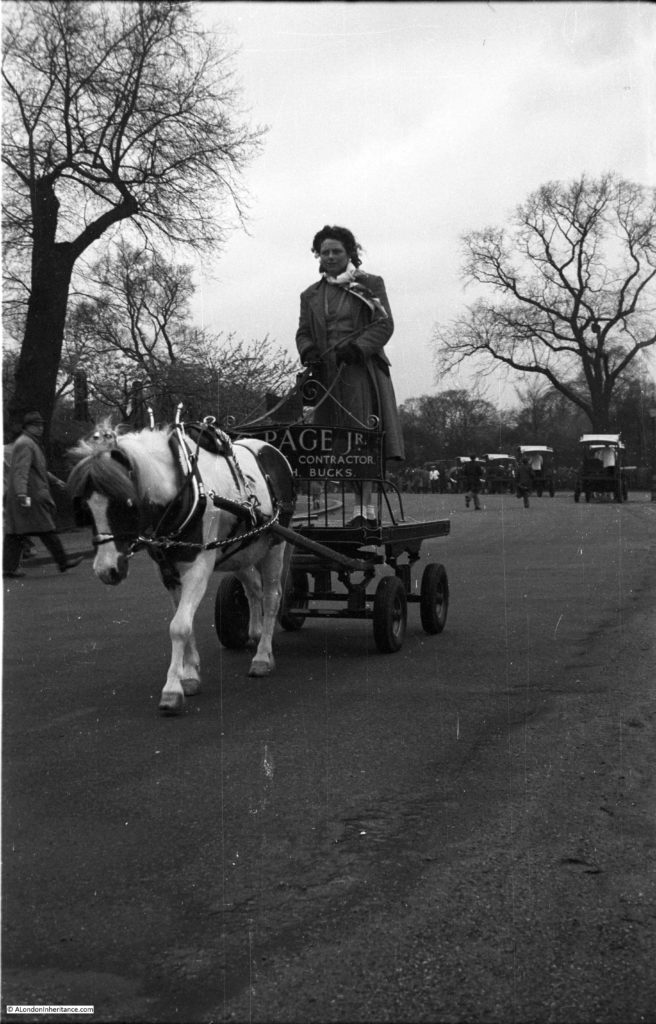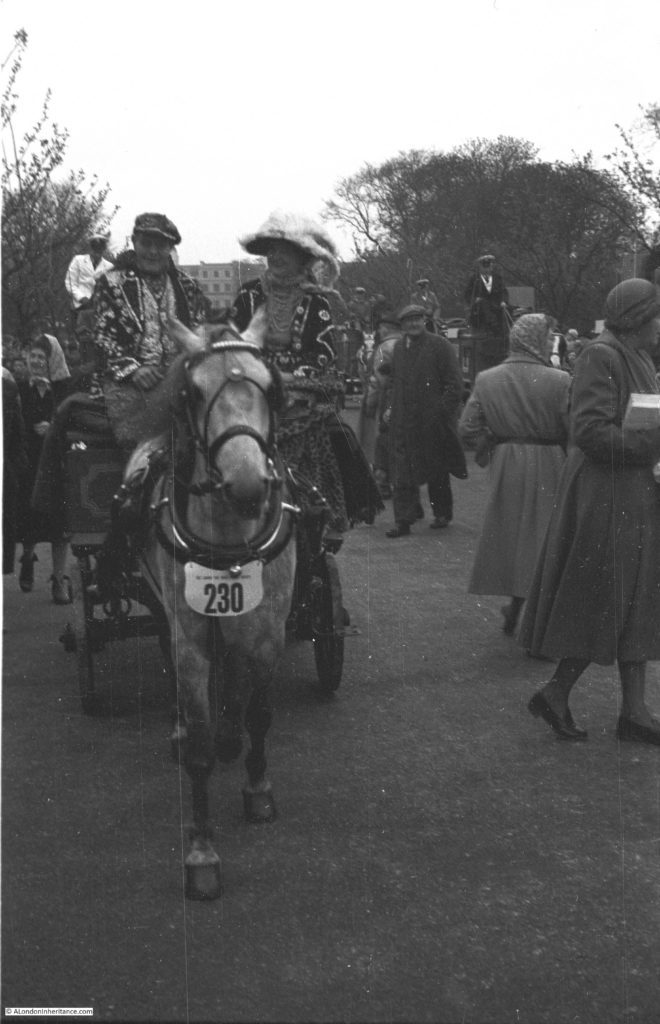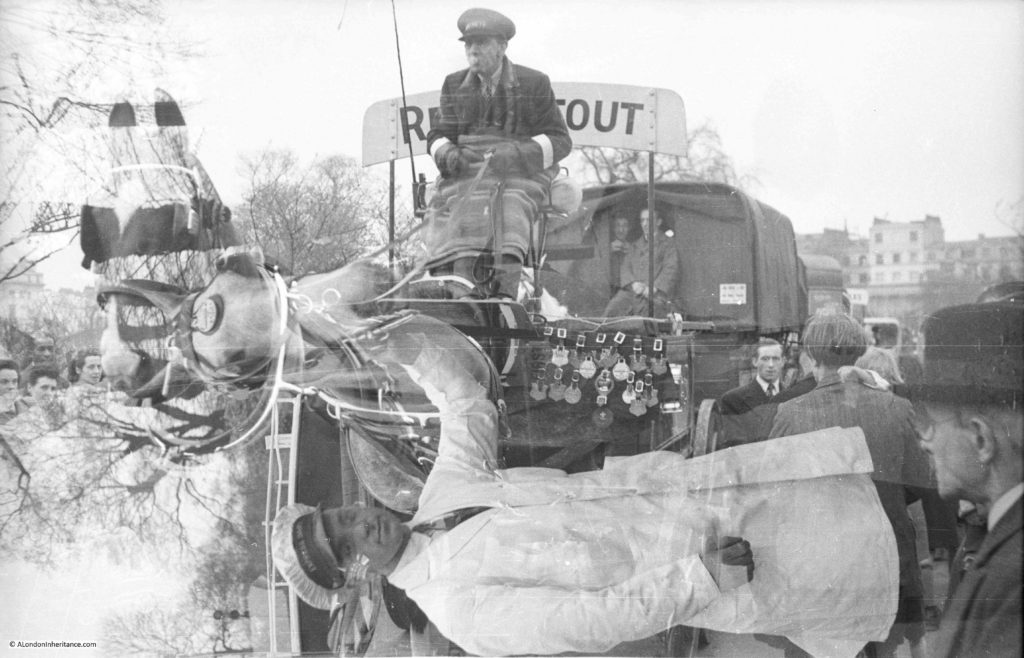Back in January I published a post on the London Cart Horse Parade showing some of the photos my father took of the event in Regent’s Park in 1949. A couple of photos from the post are shown below:
They show the vehicles that in 1949 were still probably in use across London transporting people and all manner of goods essential for the functioning of the city.
The original London Cart Horse Parade was founded in 1885 with the aim of improving the conditions of the thousands of horses that carried both goods and people along the streets of London. It was held on Whit Monday, starting in Battersea Park before moving to Regent’s Park.
The London Van Horse Parade ran from 1904 with the same objectives, but was held on an Easter Monday.
These parades must have had a considerable impact on the surrounding streets as there were hundreds of entries (the largest Van Horse Parade has 1,259 animals in the parade in 1914). After the presentation of prizes at the Cart Horse Parade, the procession would leave Regent’s Park and proceed along Albany Street, Portland Place, Oxford Street, Tottenham Court Road, Euston Road and to King’s Cross.
From 1950 the numbers of entries to the parades started to decline. Rapid growth in the use of cars, vans and lorries meant that the need for horse driven transport was in sharp decline and in 1966 the two parades joined to become the London Harness Horse Parade, continuing to be held on Easter Monday in Regent’s Park.
In 1995 the parade moved to Battersea Park, but in 2006 the costs and health and safety requirements of operating such a parade in central London meant that it was no longer possible to run the parade in Battersea Park and it moved out of London.
The London Harness Horse Parade continues to be held on Easter Monday, but now at the South of England Showground at Ardingly in West Sussex.
My aim with this blog is to track down the locations of my father’s post war photos. For the photos he took of the parade in Regent’s Park, the nearest I could get was to visit the parade in its current location, so this Easter Monday I traveled out to Ardingly to see if the London Harness Horse Parade resembled the photos taken by my father in 1949.
A showground in West Sussex is very different to Regent’s Park, however the aims of the current parade are still the same as when the parade was first held in 1885. To encourage and demonstrate the welfare of the horses, maintenance of the harness and vehicles and the standards of the driver.
The parade is a window on a way of life that has long since departed from London. Entries now come from the counties surrounding London, but many of the vehicles are originals that would have once worked the city’s streets, carrying all manner of goods and passengers.
The parade lining up to start:
This is a five ton open van pulled by two Shire Horses and was used to carry goods to and from the stations of the London, Midland and Scottish Railway across London:
The following photo is from the book “The Queen’s London” published in 1896. It shows an identical open van in front of the Bank of England transporting goods for the Midland Railway Company. The historical accuracy of the 2017 vehicle is such that a chain is hanging down underneath the van in both photos (I only realised this after the event when I was comparing photos otherwise I would have asked what the chain was for).
The range of entries highlight the specialist vehicles that once transported goods along the streets. This is a 1920 Milk Float:
As part of the event, each horse is checked by a vet, continuing the aims set out for the parade in 1885 that the welfare of the horses is to be encouraged. The parade is not competitive, there is no winner, rather all those that achieve the required standard receive a rosette.
As well as the condition of the horses, the vehicles are also judged and are immaculately preserved and maintained.
A standard design known as a “London Trolley”:
Running down to one of the judging areas: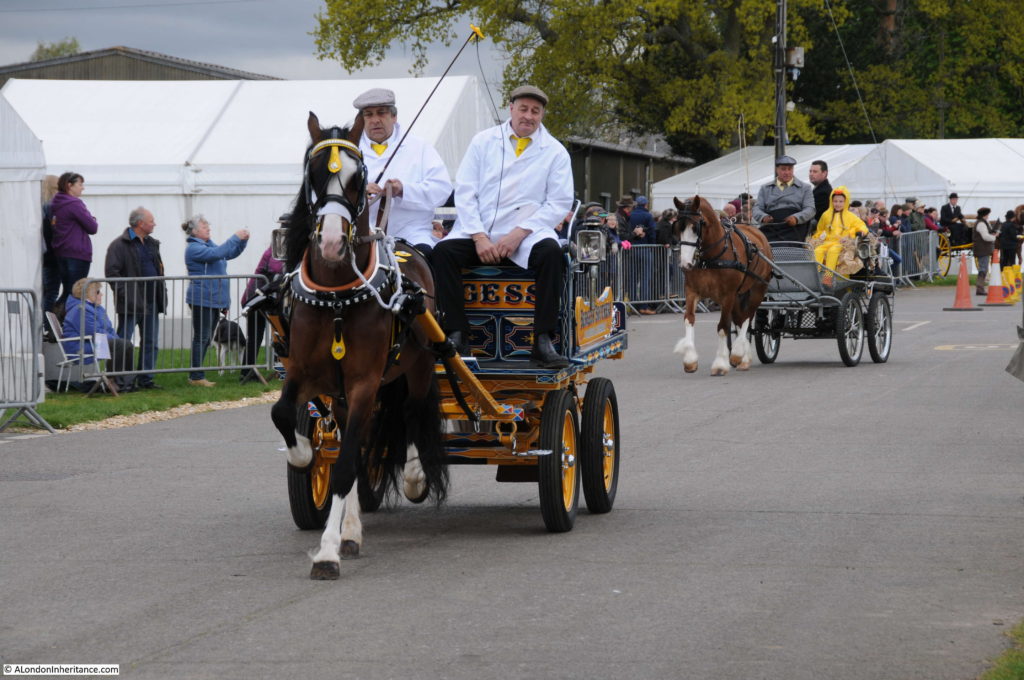
Many of the vehicles are from the 1920s and 30s highlighting that it was not just in the 19th century that horse-drawn transport was used across London, it was still a means of transport well into the 20th century.
Immaculate paint work:
All ages participate in the parade:
For those who could afford it, this is the type of vehicle that would have carried your luggage to the station:
And you would have traveled in the following carriage:
A 1920 Ice Cream Cart:
Brilliantly restored, including a selection of vintage ice cream scoops:
Horse drawn delivery drays transporting barrels of beer would once have been a common sight across London:
The Young & Co delivery dray was built-in Chelsea and dates from 1924: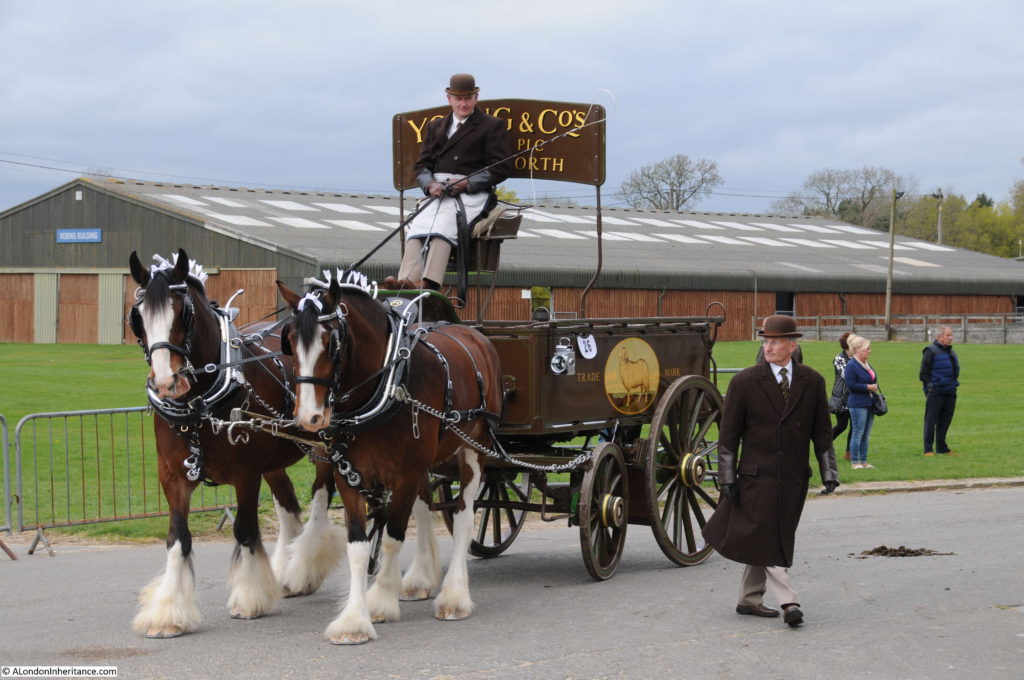
A Victorian Invalid Carriage from 1890:
The London Harness Horse Parade is now much smaller than the parades once held in Regent’s and Battersea Parks. In 1926 there were 864 vehicles entered in the Easter Monday parade, today there were around 100 entries to the 2017 parade.
It is though really good to see that the parade is still running every year and true to its original purpose of improving the conditions and treatment of London’s cart horses. Also, a place to see a historically accurate display of the vehicles that were once essential in nearly all aspects of the life of the city.



